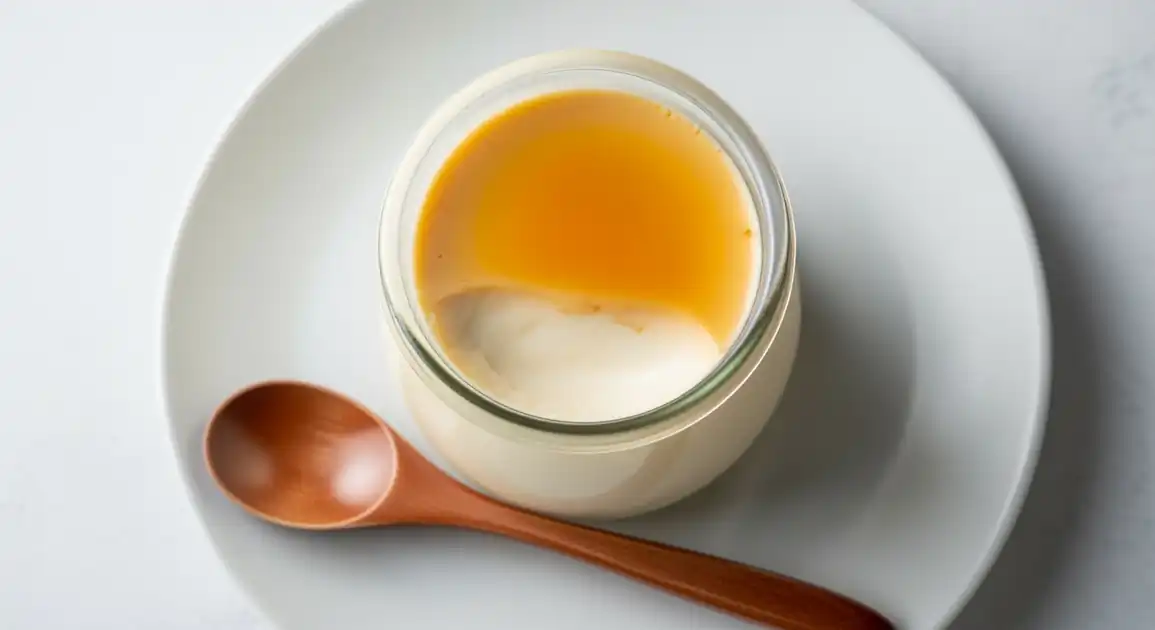Hokkaido Milk Pudding
北海道ミルクプリン (Hokkaidō Miruku Purin)

Description
Hokkaido Milk Pudding has become a beloved dessert throughout Japan, representing the pinnacle of the country's dairy culture. While most authentic versions emphasize their Hokkaido milk origins, the dessert can be found nationwide in various high-quality confectioneries, department store food halls, and specialty dessert shops. Many regions have developed their own interpretations while maintaining the essential character of showcasing premium milk.
Dietary Information
Serving information
Serving style
Typically served chilled in individual portions in glass jars, ceramic ramekins, or plastic cups with a small spoon. Usually eaten as is, though some cafes may serve with complementary beverages like green tea.
Quick facts
Most dessert shops and department store food halls operate from 10 AM - 8 PM. Convenience stores are open 24/7.
Safety Tips
What to Look For
-
Proper refrigeration
The pudding should be stored in a refrigerated display case at temperatures below 5°C/41°F. Avoid products left at room temperature.
-
Intact packaging with condensation
Condensation on containers indicates proper cold chain maintenance. Sealed lids without signs of tampering ensure food safety.
-
Uniform texture and color
Quality pudding has a consistent ivory-white color throughout, with no separation, bubbles, or discoloration.
-
Established shops with good reputation
Well-known confectioneries, department store food halls, and specialty Hokkaido product shops typically maintain high standards.
-
Clear expiration dates
All commercial puddings should have visible production and expiration dates. Choose the freshest option available.
What to avoid
-
Pudding with liquid separation or weeping
Separation indicates improper storage, temperature fluctuations, or spoilage. The surface should be smooth and intact.
-
Yellow discoloration or unusual odors
These are signs of potential spoilage. Fresh milk pudding has a clean, mild dairy aroma.
-
Extremely long shelf life claims for "fresh" pudding
Authentic fresh pudding typically lasts only 3-7 days. Products claiming much longer periods likely contain excessive preservatives or aren't truly fresh.
-
Bargain-priced "Hokkaido-style" products with vague origin claims
Real Hokkaido milk products command premium prices. Suspiciously cheap versions often use regular milk with artificial flavoring.
Price information
Price range
Budget tips
- Department store food halls often offer high-quality puddings for 400-600 JPY.
- Convenience store premium versions provide good value at 250-350 JPY.
- Specialty shops in tourist areas tend to charge premium prices (700-1000 JPY).
- Some shops offer mini sizes at lower prices if you just want a taste.
- Look for end-of-day discounts at some bakeries and dessert shops.
Value indicators
- Contains actual Hokkaido milk (北海道産牛乳) listed as the first ingredient.
- Glass or ceramic containers rather than plastic packaging.
- Minimal ingredients list without stabilizers or preservatives.
- Handmade appearance rather than mass-produced uniformity.
- Appropriate weight - quality puddings have substance and density.
Where to Find This Dish
Department Store Food Floors (Depachika)
High-quality confectionery sections of major department stores offer premium versions, often beautifully packaged.
Isetan, Mitsukoshi, Takashimaya, Other major department stores
Afternoon, Weekend
Specialty Dessert Shops
Dedicated pudding or milk dessert specialists focusing on quality ingredients and presentation.
Shopping districts, Upscale neighborhoods
Afternoon
Stations and Shopping Centers
Shops in major transit hubs often carry regional specialties, including Hokkaido milk products.
Major train stations, Shopping malls
All day
Vendor Tips
- Many quality shops offer taste samples before purchase.
- Ask if they use real Hokkaido milk (北海道産牛乳) for authenticity.
- Shops specializing exclusively in pudding typically offer the best quality.
How to Order
Regional Variations
-
Classic Caramel Hokkaido Milk Pudding
(北海道ミルクプリン カラメルソース)
The traditional style with a thin layer of caramel sauce on top or bottom, providing a sweet contrast to the pure milk flavor.
-
Plain Hokkaido Milk Pudding
(北海道ミルクプリン プレーン)
Served without toppings to highlight the exceptional quality and taste of the Hokkaido milk itself.
-
Brown Sugar Syrup Milk Pudding
(北海道ミルクプリン 黒蜜)
Topped with kuromitsu (Japanese brown sugar syrup) instead of caramel for a deeper, more complex sweetness.
-
Seasonal Fruit Milk Pudding
(北海道ミルクプリン 季節のフルーツ)
Accompanied by fresh seasonal fruits like strawberries in spring or peaches in summer.
-
Royal Milk Tea Pudding
(北海道ロイヤルミルクティープリン)
Infused with black tea to create a milk tea flavor profile while maintaining the silky texture.
Cultural context
History
While custard puddings (プリン or purin) have been part of Japanese dessert culture since the early 20th century, specialized Hokkaido Milk Pudding emerged more recently as part of Japan's regional specialty (meibutsu) boom. As Hokkaido's reputation for superior dairy quality grew throughout the 1980s and 1990s, confectioners began creating milk-forward desserts specifically highlighting the region's prized ingredient. Today, these puddings represent both Hokkaido's agricultural heritage and Japan's meticulous approach to elevating simple ingredients into refined culinary experiences.
Local significance
Represents Japan's appreciation for regional food specialties (meibutsu) and the country's perfection of Western-influenced desserts using superior local ingredients.
Eating customs
- Eaten slowly in small spoonfuls to appreciate the texture and flavor.
- The wooden or small spoon provided should be used rather than a large spoon.
- Often accompanied by unsweetened green tea to complement the sweetness.